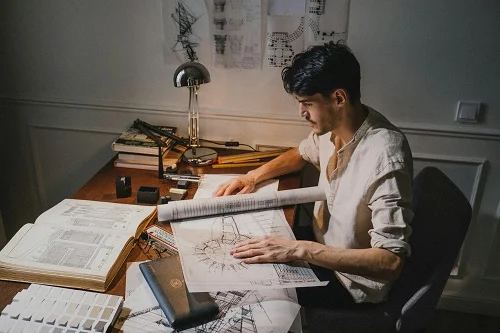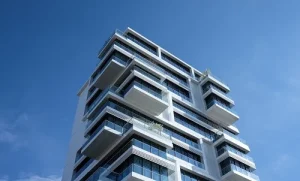What is the engineering design process?
Engineering design process: definition is a systematic approach used by engineers to solve problems and develop innovative solutions. It’s a creative process that involves a series of steps, each building upon the previous one. This process is adaptable and can be used for a wide range of engineering projects, from designing a simple tool to developing complex systems.
Steps of the engineering design process
The engineering design process is a series of steps that engineers follow to bring an idea from concept to reality. While the exact steps may vary depending on the project, the general sequence remains the same.
-
Define the problem
The first step in the engineering design process is to define the problem. This involves clearly identifying what needs to be solved or improved. Engineers must consider the needs of the end-user, the constraints of the project, and the desired outcome.
-
Brainstorm possible solutions
Once the problem is defined, engineers can begin to brainstorm possible solutions. This is a creative phase where engineers generate as many ideas as possible, without judgment. The goal is to explore a wide range of options.
-
Research ideas
After brainstorming, engineers need to research ideas to determine their feasibility. This may involve conducting experiments, gathering data, or consulting with experts.
-
Establish criteria and constraints
Design requirements must be established to evaluate the potential solutions. These criteria may include factors such as cost, performance, safety, and environmental impact. Constraints are limitations that must be considered, such as budget, time, and available materials.
-
Consider alternative solutions
Engineers should carefully consider alternative solutions based on the established criteria and constraints. This step involves comparing and contrasting different options to identify the most promising ones.
-
Select an approach
After evaluating the alternatives, engineers must select an approach. This decision is based on a combination of factors, including feasibility, cost, and the ability to meet the design requirements.
-
Develop a design proposal
A design proposal is created to document the chosen approach. This proposal outlines the design, materials, and manufacturing processes to be used.
-
Make a model or prototype
A model or prototype is created to test the design. This allows engineers to identify any flaws or areas for improvement.
-
Test and evaluate
The prototype is then tested and evaluated against the design requirements. This step involves gathering data and analyzing the results.
-
Refine the design
Based on the results of the testing, engineers may need to refine the design. This iterative process continues until the design meets all of the requirements.
-
Create the solution
Once the design is finalized, engineers can create the solution. This may involve manufacturing the product or building the system.
-
Communicate the results
The final step is to communicate the results. This involves presenting the design to stakeholders and documenting the process for future reference.
The importance of problem definition
The first step of the engineering design process, defining the problem, is crucial for ensuring a successful outcome. A clear and concise problem statement provides a foundation for the entire project. It helps to focus the team’s efforts, identify key constraints, and establish measurable goals. Engineers must take the time to thoroughly understand the problem from the user’s perspective, considering factors such as usability, functionality, and aesthetics.
The role of creativity in engineering design
Creativity plays a vital role in the engineering design process. It allows engineers to generate innovative and unconventional solutions that may not be immediately apparent. Brainstorming techniques, such as mind mapping and lateral thinking, can be used to stimulate creativity and encourage the exploration of diverse ideas. By fostering a creative environment, engineers can develop unique and effective solutions that meet the needs of the user and the project’s requirements.
The future of engineering design
The engineering design process is constantly evolving, driven by technological advancements and changing societal needs. As new technologies emerge, engineers will need to adapt their approaches to design and problem-solving. Additionally, the increasing importance of sustainability and social responsibility will require engineers to consider these factors more deeply in their work.
In the future, we can expect to see further integration of artificial intelligence and machine learning into the engineering design process. These technologies can help engineers to analyze data, identify trends, and optimize designs. Additionally, the growing emphasis on sustainability and social responsibility will likely lead to the development of new design methodologies and tools that prioritize these factors.
Conclusions
The engineering design process is a solve problems approach that is essential for the development of new products and technologies. It is a creative process that requires engineers to think critically, analyze information, and make informed decisions. While the amount of time spent on each step may vary depending on the complexity of the project, the overall sequence remains consistent.
Recommendations
- Embrace iteration: The engineering design process is iterative, meaning that it involves going back and forth between steps. Be prepared to make changes to your design as you learn more.
- Collaborate with others: Engineering is a team sport. Collaborate with other engineers, designers, and stakeholders to get the best results.
- Use technology: Computer-aided design (CAD) software and other technologies can greatly enhance the engineering design process.
- Stay up-to-date with the latest trends: The field of engineering is constantly evolving. Stay up-to-date with the latest trends and technologies to remain competitive.
Enjoy more high-quality content on our website
Retaining Wall Ideas
Iron Carbon Phase Diagram






